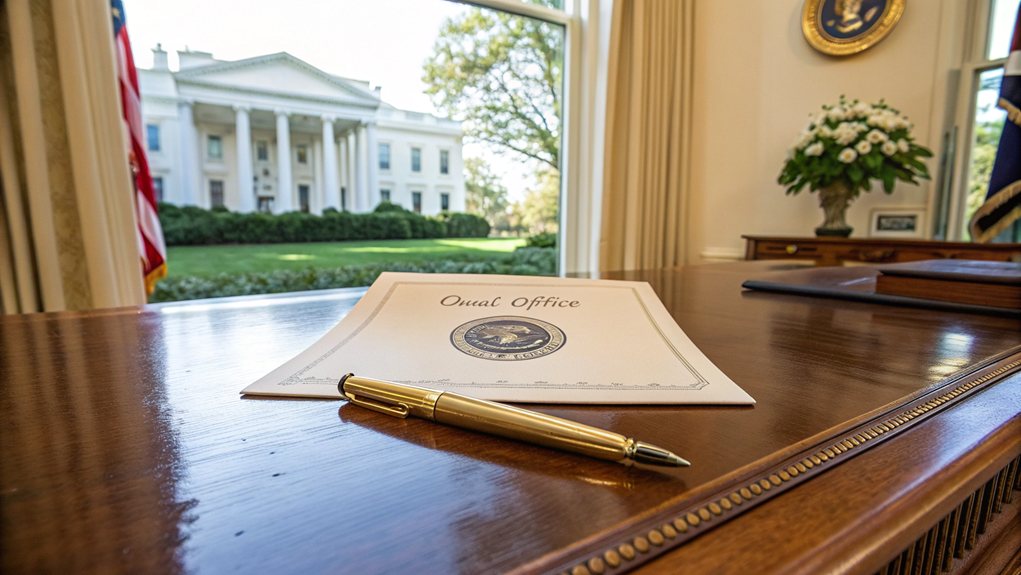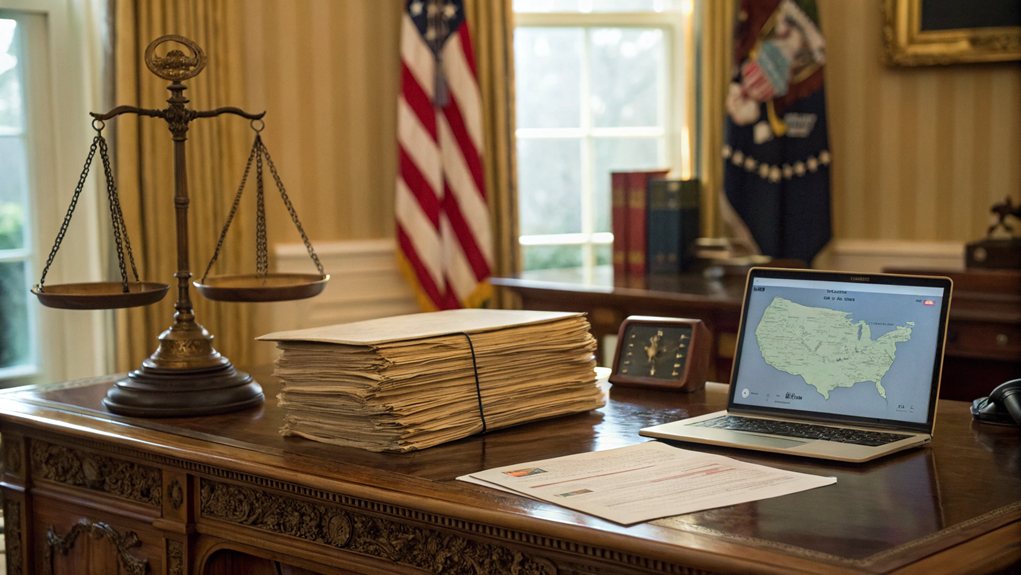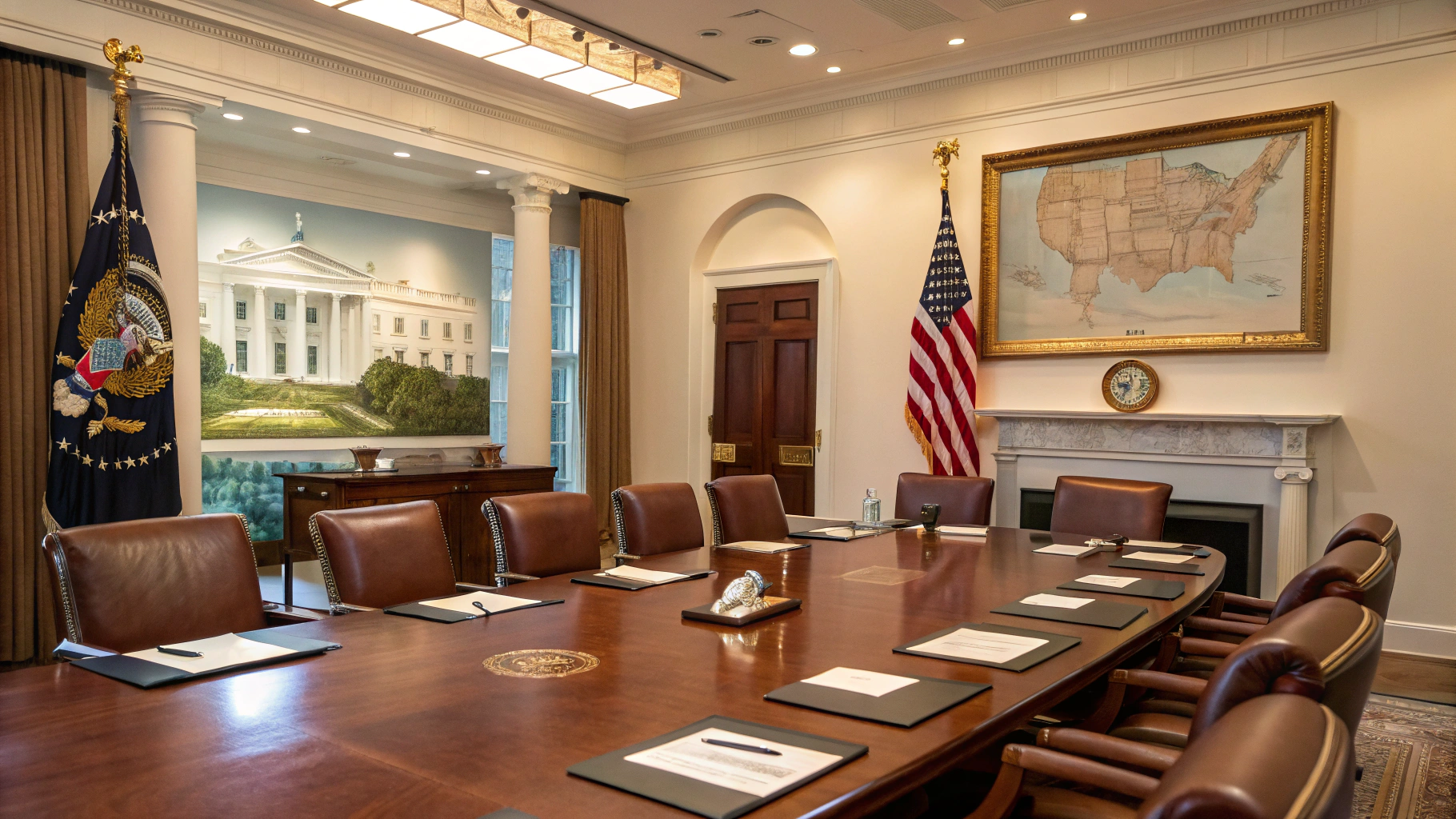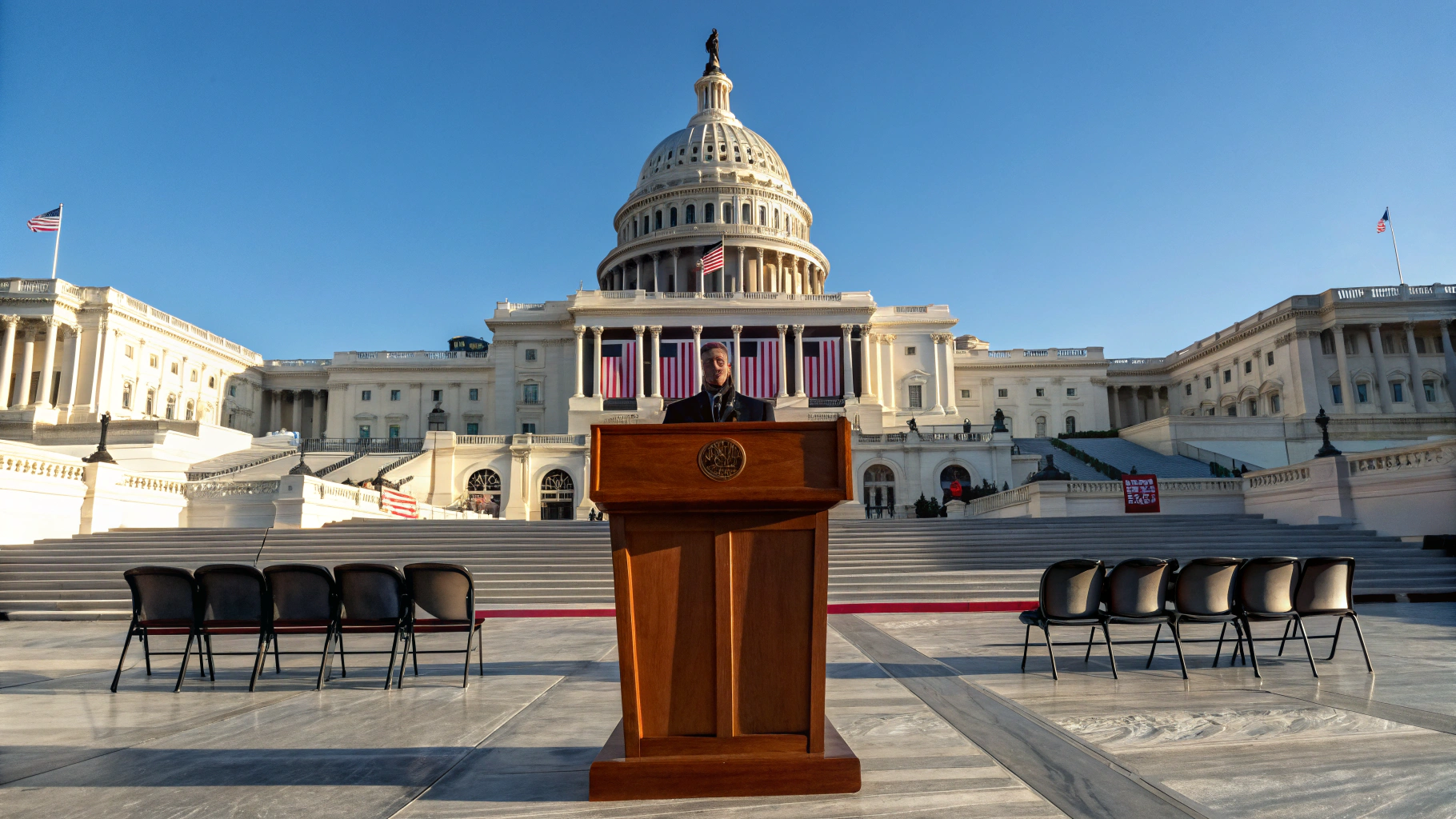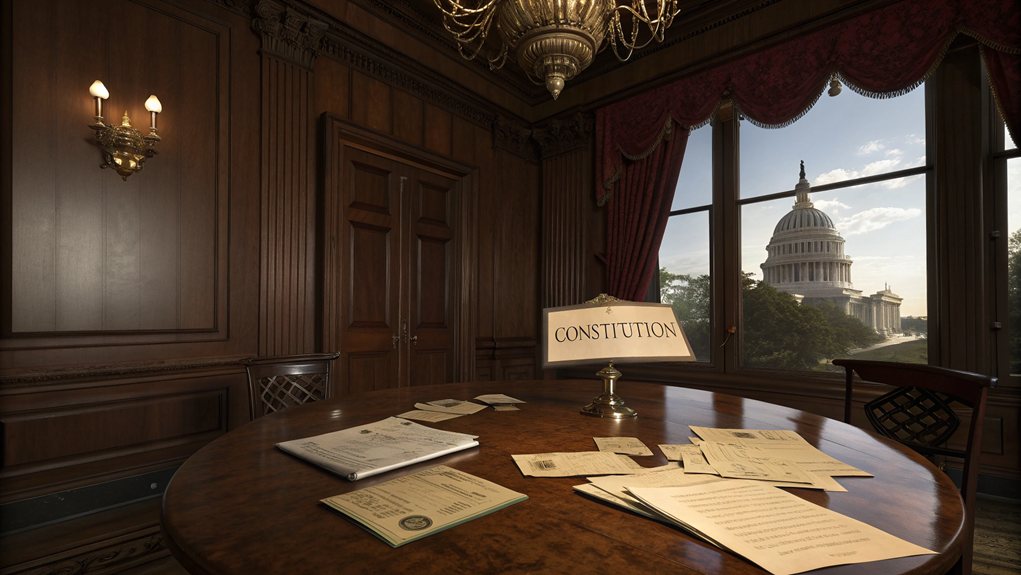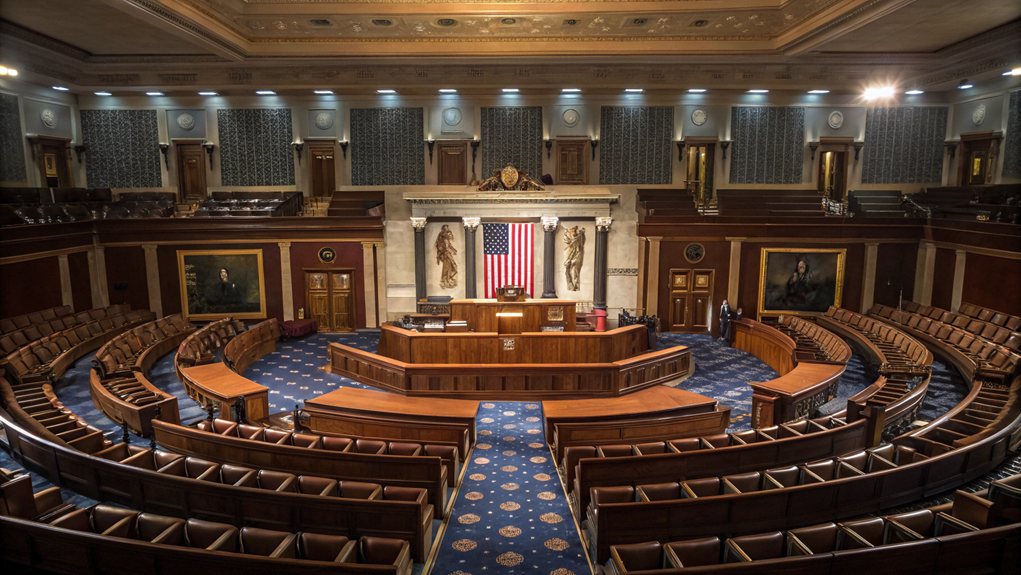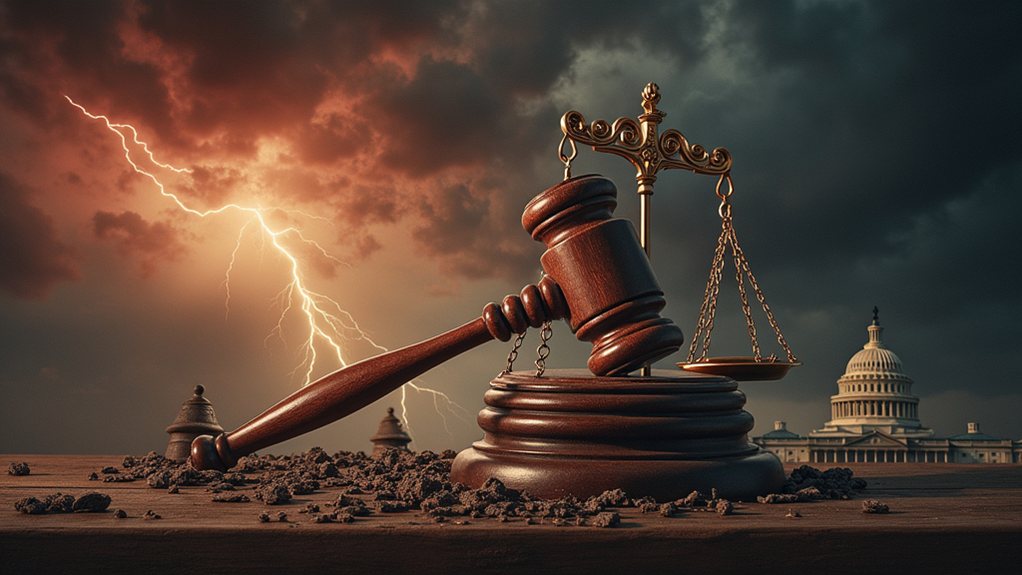Executive orders? They're like presidential cheat codes. With a quick signature, presidents can direct federal agencies and tackle issues without waiting for Congress to catch up. Sure, they have to stick to constitutional boundaries, but it's a handy way to bypass the whole messy legislative process. Sometimes they spark big changes, sometimes controversy. Still, they're essential for swift action. Want to know how these orders have shaped history—or been challenged? Keep on exploring.
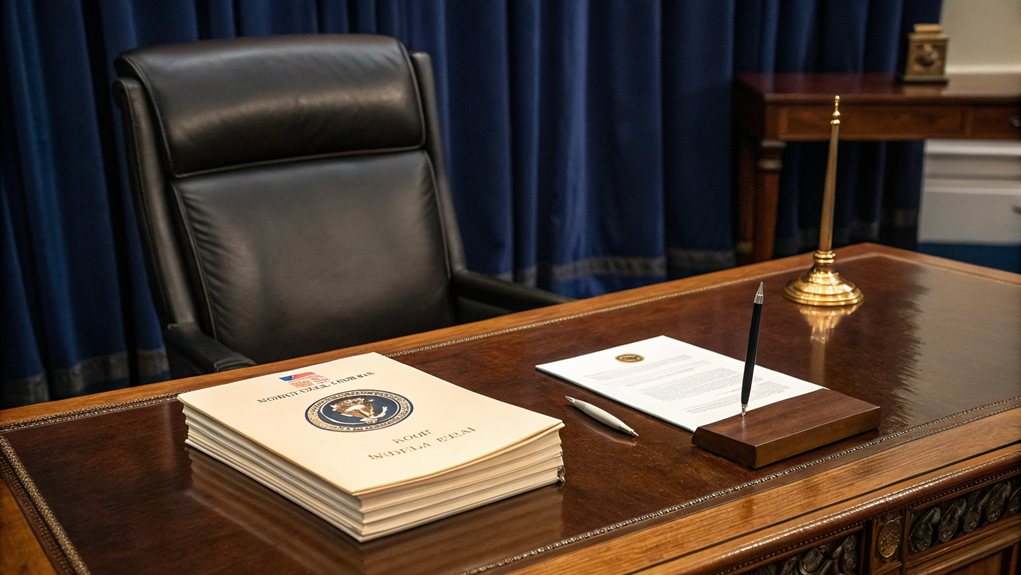
Executive orders: they sound official, don't they? These written directives, signed by the president, serve as tools for managing federal government operations. They aren't laws—let's get that straight—but they sure pack a punch. Based on Article II of the Constitution, executive orders have the force of federal law once they hit the Federal Register. Fancy, huh?
Executive orders wield significant power, guiding federal operations without being actual laws—official yet dynamic tools of governance.
Now, what's the deal with them? They guide federal agencies on how to enforce regulations, tackle pressing issues, and implement policies. However, there's a catch. Presidents can't just wave a magic wand and create new laws or ignore existing statutes. No, that would be too easy. They operate within a framework established by the Constitution and Congress, which means they have authority but also limitations on their power. The potential for judicial review ensures that these orders do not overstep constitutional boundaries, as courts can scrutinize their legality.
Historically, executive orders date back to George Washington. Every president since has taken a turn at this, like a game of hot potato with power. Some orders have been groundbreaking, like Lincoln's Emancipation Proclamation, while others? Not so much. Ever heard of the internment camps during World War II? Yeah, that was a presidential directive too. Executive orders can fill gaps in federal law without the legislative process, which can lead to significant impacts on policy.
And let's not forget about the drama. Executive orders often face legal challenges. Courts can overturn them if they find them unconstitutional, and Congress can step in to pass laws that override them. So, while executive orders offer a way for presidents to act swiftly—especially in emergencies—they're not without checks and balances.
The signing and publication process is straightforward. The president signs, and voilà, it's in the Federal Register for all to see. But here's the kicker: some orders may not even get published. Transparency? Sometimes it's just a buzzword.
The bottom line is, executive orders are about agility in governance, allowing presidents to adapt quickly. They can be controversial, but they're a major part of the political landscape, whether you like it or not.
Frequently Asked Questions
Can Executive Orders Be Overturned by Congress?
Sure, Congress can try to overturn executive orders.
But it's not a walk in the park. They can pass laws to contradict them, but good luck getting past a presidential veto without a two-thirds majority.
They also control the purse strings, so they can starve an order of funding.
And, let's not forget the courts—sometimes they just step in and say, "Nope!"
It's a complex dance, to say the least.
How Are Executive Orders Different From Laws?
Executive orders and laws? Totally different beasts.
Laws come from Congress, the big show where debates happen and votes are cast. But executive orders? They're the president's quick fix, a way to push policy without waiting for the legislative snooze-fest.
They have the force of law but can be overturned if they're out of line. So, while laws take time and teamwork, executive orders are more like a solo sprint—fast and sometimes reckless.
Are Executive Orders Public Documents?
Yes, executive orders are indeed public documents. Shocking, right?
They're published in the *Federal Register*, so anyone with internet access can check them out. It's not like they're secret government plans or anything.
The National Archives keeps a tidy list, and even your grandma could find them online.
Sure, they're issued by the President, but they're meant to be transparent. After all, who doesn't love a little peek behind the curtain of power?
Can State Governors Issue Executive Orders?
Yes, state governors can issue executive orders.
They pull this power from state constitutions and laws. Basically, it's their way of making things happen without waiting for the slowpoke legislature.
Need to manage a disaster or change agency rules? Boom—executive order.
Sure, there are limits and legislative checks, but when emergencies strike, governors flex their muscles.
It's all about quick decisions, even if it ruffles some feathers.
How Often Do Presidents Use Executive Orders?
Presidents use executive orders like they're going out of style—averaging around 269 during their time in office.
Two-term leaders? They crank it up to about 328. Crazy, right?
Historically, the number has dropped over the years, with Barack Obama signing fewer than most—just 35 a year.
Jimmy Carter, though? He was the overachiever, hitting 80 per year.
Clearly, some presidents love their orders more than others. What a wild ride!
